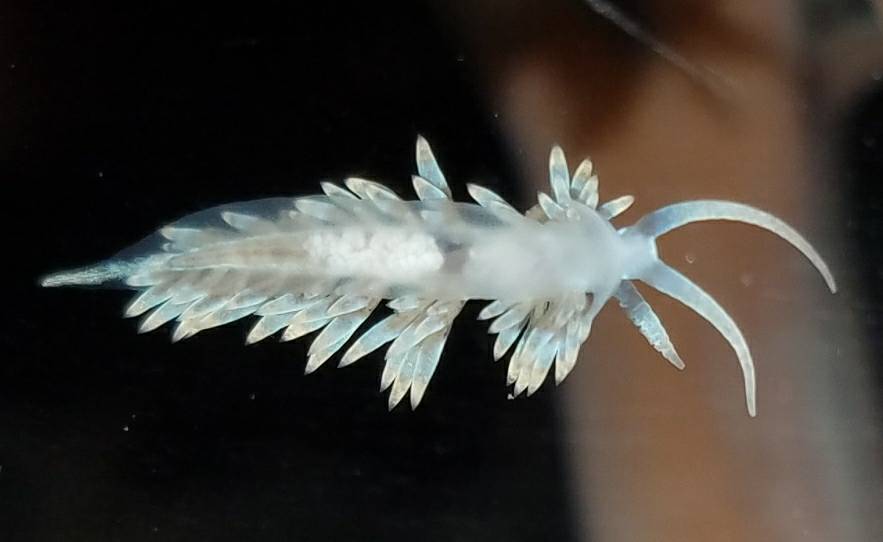Today, we’ll dive into the realm of two marine microorganisms that might be present in your aquarium: Diatoms and Dinos (dinoflagellates). Both play crucial roles in our ocean’s ecosystems and can sometimes be found in our home aquariums. We’ll help you learn how to identify them so you know for sure whether you have diatoms or dinos, share insights into their importance and potential impact on your tank, and provide tips for managing their populations.
What are diatoms
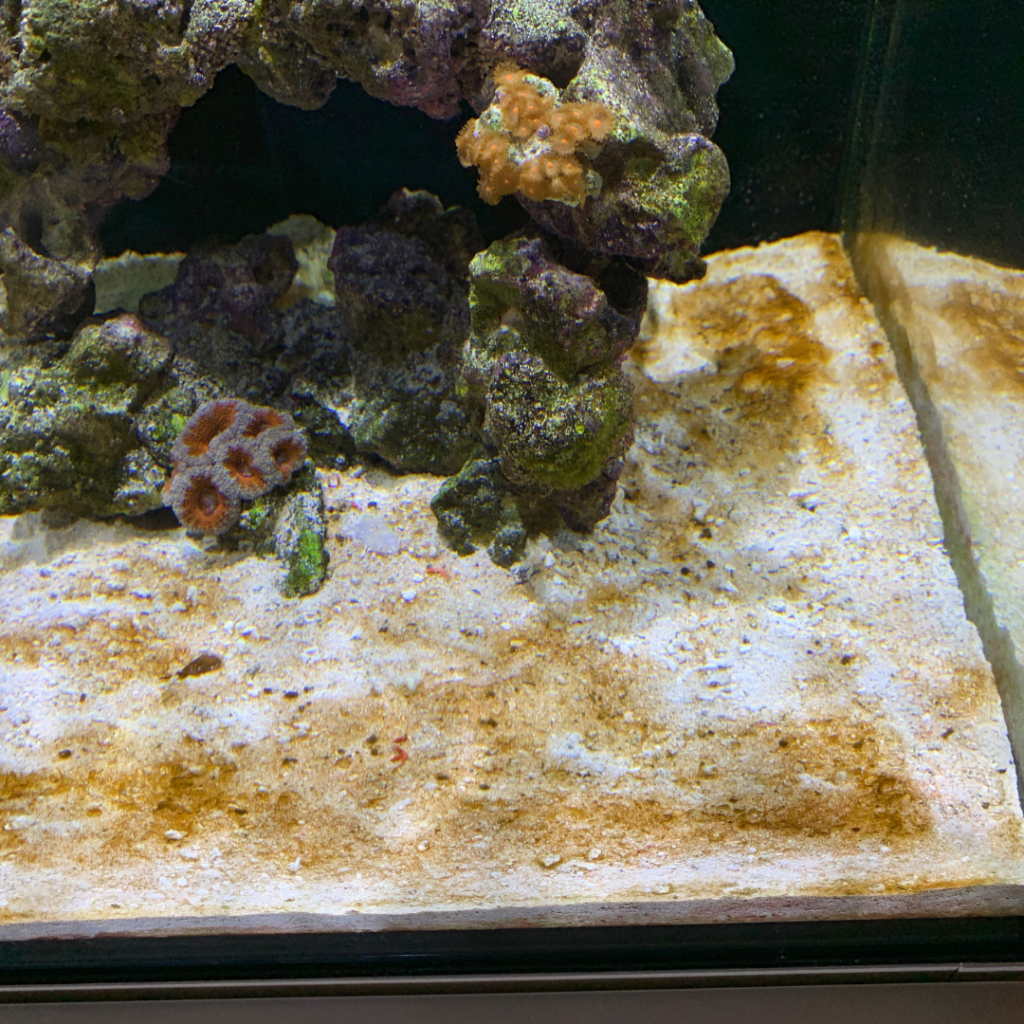
Diatoms are a group of single-celled algae that are known for their ornate, glass-like cell walls made of silica. These cell walls, called frustules, can form intricate and stunning patterns.
Diatoms are commonly found in both freshwater and marine environments, and they serve as a significant food source for various aquatic creatures, including copepods, small crustaceans, and even some species of fish.
How to identify diatoms in a reef tank
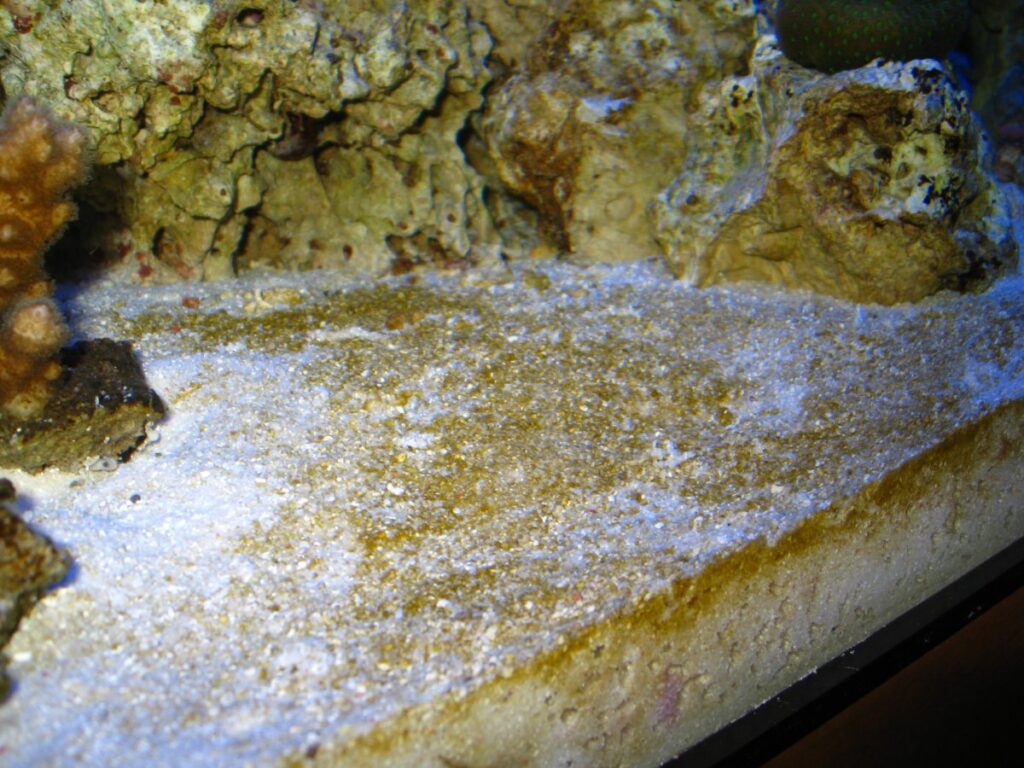
Diatoms will usually appear on your sand bed and other surfaces of your tank exhibiting a brownish or golden film. Diatoms will also feel slimy or even powdery when touched. Diatoms will typically grow on your reef tanks glass, rock, sand bed, and even on slower moving inverts.
You will usually find diatoms in new reef tanks, but in some cases an outbreak can occur in an established system if a surplus of silicates are present in the tanks water.
- Color: Brownish or golden-brown
- Texture: Slimy or powdery
- Location: Glass, rocks, sand bed
- Rapid growth: Diatoms can quickly colonize new surfaces, especially in newly set-up aquariums where silicate levels are initially high.
Related: How To Get Rid of Diatoms In Your Reef Tank (Guaranteed Fix)
Dinoflagellates: The Bioluminescent Protists
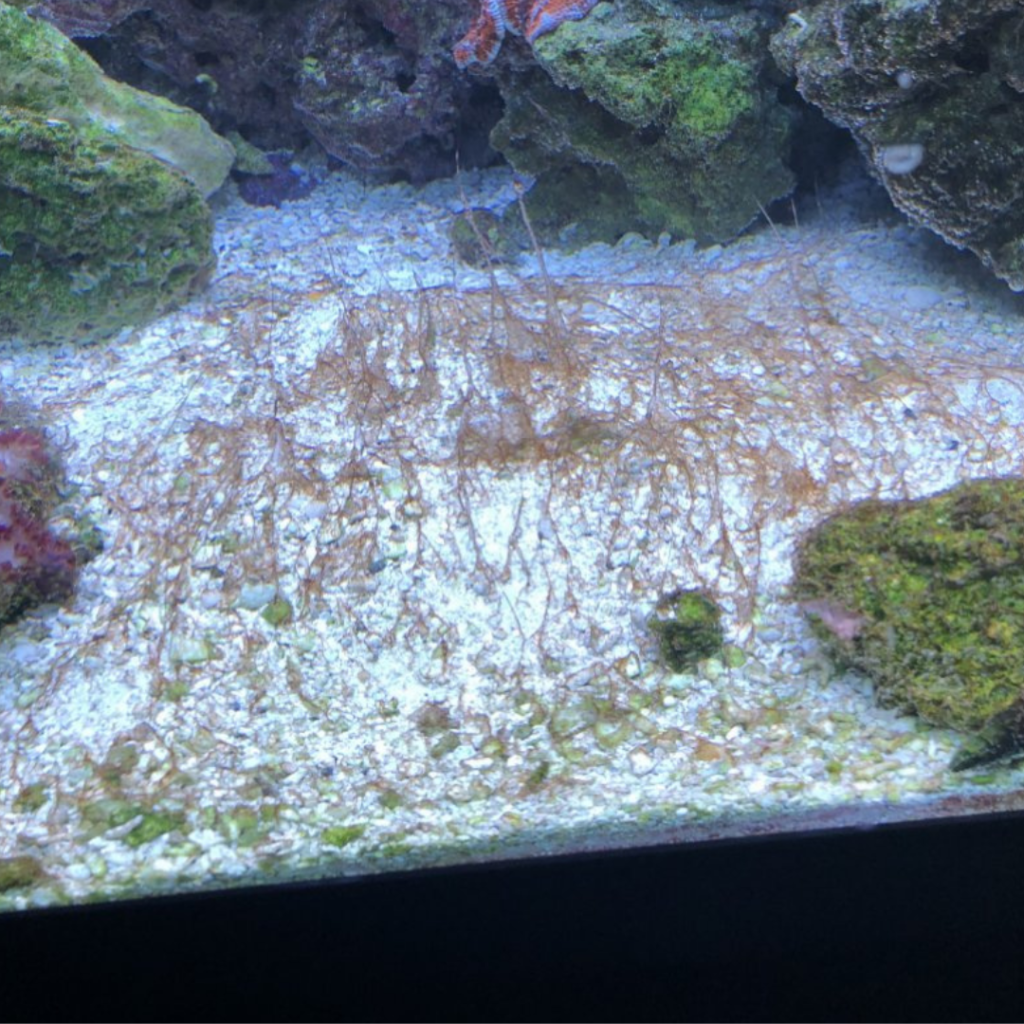
Dinoflagellates are single-celled protists that can exhibit both plant-like and animal-like characteristics. Some species are photosynthetic, while others are predatory or even parasitic.
Dinoflagellates are often responsible for the mesmerizing bioluminescent displays seen in oceans worldwide, especially during red tide events. They can also be a significant food source for filter-feeding organisms like coral, clams, and sponges.
What do dinos look like in a reef tank?

Dinos in your reef tank will usually exhibit a slimy, stringy web like structure resembling snot. They can vary in color but dinos are often green, yellow, and most commonly brown. Dinos can be found free-swimming in the water column (most visible when the light is off) or even attached to rocks and other surfaces in your tank.
- Color: Green, yellow, or brown.
- Texture: Slimy, snot-like film or stringy, web-like structures
- Location: Free-swimming in the water column or attached to surfaces
- Bioluminescence: Some species of dinoflagellates are capable of producing light, which can be observed in the aquarium during nighttime or in a dark environment.
Related: How to Get Rid of Dinos From Your Reef Tank
The Paper Towel Test: A Simple Method to Identify Diatoms and Dinoflagellates
A straightforward and practical method to help tell the difference between diatoms or dinos in your aquarium is the paper towel test. This test can provide you with a quick indication of the type of microorganism present in your tank.
How to perform the paper towel test to determine if you have diatoms or dinos:
- Turn off your aquarium’s circulation and allow the water to settle for a few minutes.
- Take a clean, white paper towel and gently press it against the surface where you suspect diatoms or dinoflagellates are growing.
- Carefully lift the paper towel and observe the residue left on it.
If the residue on the paper towel appears brownish or golden-brown and easily wipes away, you are likely dealing with diatoms. Diatoms have a powdery or slimy texture and are easily dislodged from surfaces.
On the other hand, if the residue is green, yellow, or brown, and forms a slimy, snot-like film or stringy structures that do not easily wipe away, you may have dinoflagellates in your aquarium. Dinoflagellates tend to cling to surfaces more tenaciously than diatoms.
How to get rid of Diatoms and Dinos in a reef tank
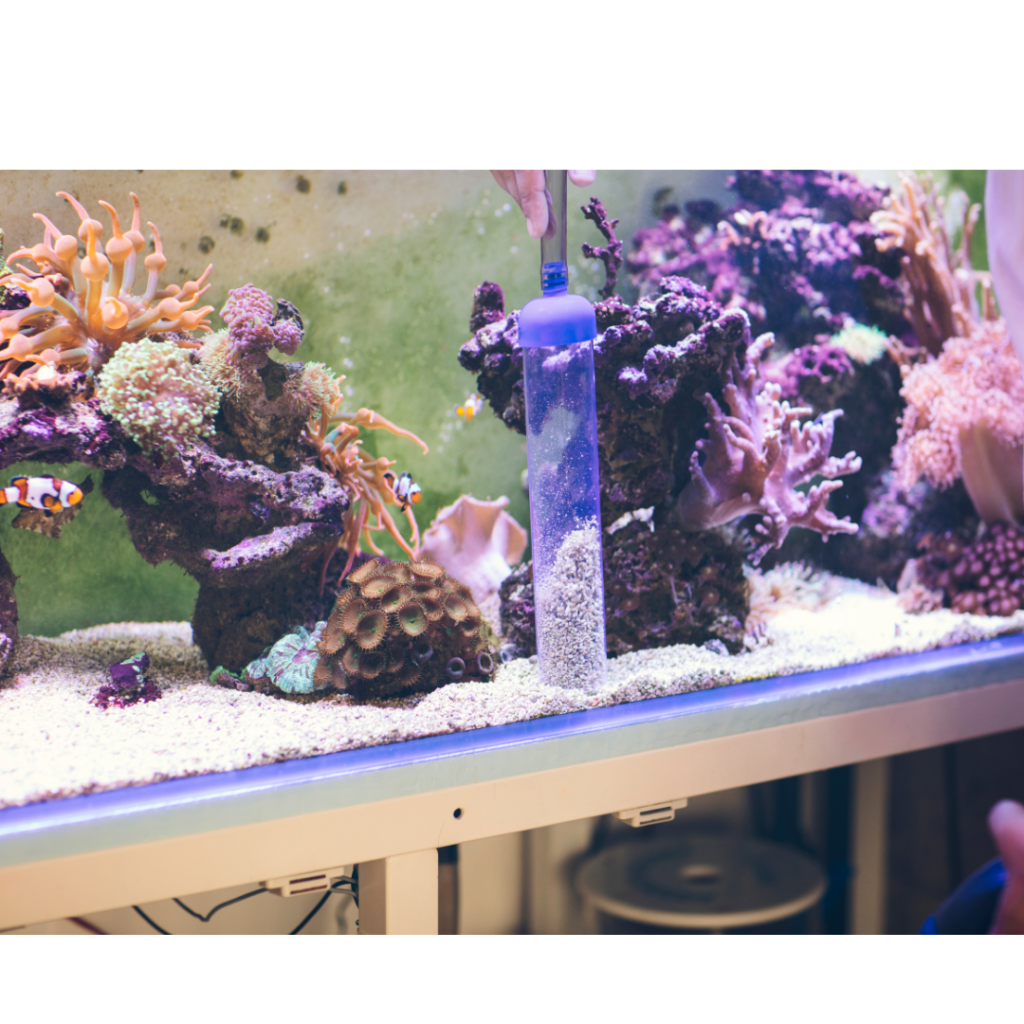
Maintaining a healthy balance in your aquarium is crucial, as the overgrowth of diatoms and dinoflagellates, both natural components of aquatic ecosystems, can cause issues. To achieve this balance, follow these guidelines:
First, ensure good water quality by performing regular water changes, using proper filtration, and monitoring water parameters. Keep a close eye on parameters such as nitrates, phosphates, and silicates, as they can influence microorganism populations.
Second, limit the availability of nutrients in your aquarium. To do this, avoid overfeeding your fish and consider using a protein skimmer or phosphate/silicate-absorbing media to reduce excess nutrients in the water.
Third, introduce natural predators to help control the population of diatoms and dinoflagellates. Some aquarium inhabitants, like copepods, amphipods, and certain species of snails and fish, can contribute to managing these microorganisms.
Lastly, utilize appropriate lighting for your tank inhabitants. Incorrect lighting can contribute to the growth of diatoms and dinoflagellates. Be mindful of the photoperiod, as leaving lights on for extended periods can promote their proliferation.
Tip: If you have a bad outbreak of diatoms or dinos , try leaving your tanks lights off for a day to starve the algae.
Similarities Between Diatoms and Dinoflagellates
While diatoms and dinoflagellates have distinct characteristics, they also share some similarities. Understanding these similarities can help you appreciate their roles in aquatic ecosystems and the challenges of managing their populations in an aquarium setting.
- Photosynthesis: Both diatoms and many species of dinoflagellates are photosynthetic, meaning they use light energy to convert carbon dioxide and water into food. This process produces oxygen as a byproduct, making them essential components in aquatic ecosystems for oxygen production and carbon cycling.
- Microscopic size: Diatoms and dinoflagellates are both microscopic, typically ranging from a few to several hundred micrometers in size. This small size allows them to easily suspend in the water column, making them available as food for various filter-feeding organisms.
- Primary producers: As photosynthetic organisms, both diatoms and dinoflagellates serve as primary producers in aquatic food webs. They form the base of the food chain, providing energy and nutrients for higher trophic levels, including zooplankton, small crustaceans, and fish.
- Sensitivity to environmental conditions: Diatoms and dinoflagellates are both sensitive to changes in environmental conditions, such as light, temperature, and nutrient availability. This sensitivity can lead to population fluctuations in response to changing conditions in an aquarium.
Key Differences Between Diatoms and Dinoflagellates
Understanding the key differences is essential to identifiing whether you have diatoms or dinos in your reef tank.
- Cell composition: Diatoms have rigid, silica-based cell walls called frustules that create intricate patterns, while dinoflagellates have a more flexible cell covering, which can be made of cellulose plates (theca) or lack a rigid structure altogether.
- Shape: Diatoms exhibit a variety of shapes, including circular, elliptical, and elongated forms, while dinoflagellates typically have a characteristic “bean” or “hourglass” shape.
- Locomotion: Dinoflagellates possess two whip-like appendages called flagella, which they use for movement. In contrast, diatoms do not have flagella and are primarily passive drifters, although some species can glide along surfaces using a mucilage secretion.
- Reproduction: Diatoms mainly reproduce asexually through cell division, while dinoflagellates can reproduce both asexually through cell division and sexually via the fusion of gametes.
- Ecological impacts: While both groups can cause issues in an aquarium, some dinoflagellates can have more severe ecological consequences, as certain species produce toxins that can harm or kill marine life during harmful algal blooms (red tides).
Examining Diatoms and Dinoflagellates Under a Microscope
Using a microscope to observe diatoms and dinoflagellates can help you better understand their unique characteristics and make it easier to differentiate between them.
Here’s what you can expect to see when examining these microorganisms under a microscope:
Diatoms under a microscope:

- Shape: Under the microscope, you’ll see the various shapes of diatoms, including circular, elliptical, and elongated forms.
- Frustules: Diatoms have intricate patterns and ornamentation on their silica-based frustules. Observing these delicate, glass-like cell walls can help you identify diatoms.
- Color: Diatoms often appear golden-brown under the microscope due to the presence of fucoxanthin, a pigment used for photosynthesis.
- Size: Diatoms can range in size from a few to several hundred micrometers, making them easily visible under a microscope with appropriate magnification.
Dinoflagellates under a microscope:
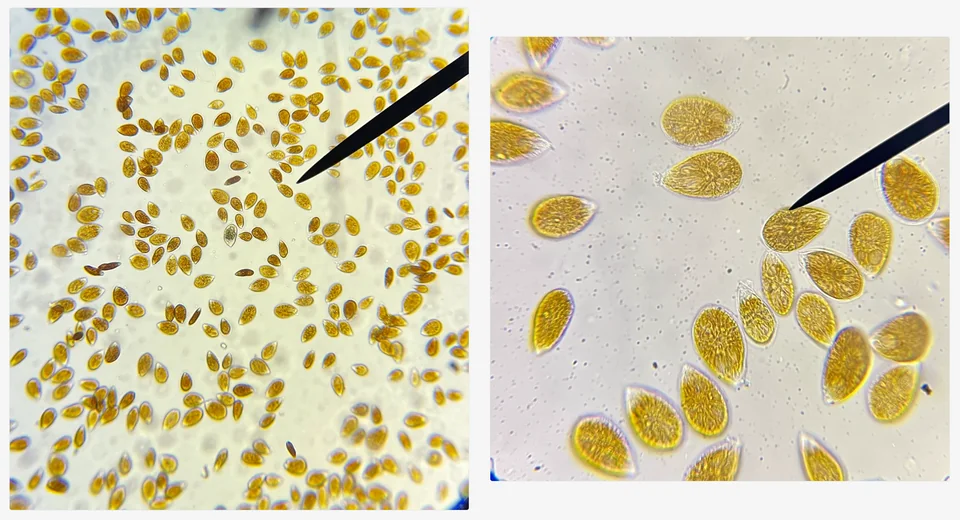
- Shape: Dinoflagellates are diverse in shape, but most species have a characteristic “bean” or “hourglass” shape. You may also see their two flagella under the microscope.
- Theca: Some dinoflagellates have a cell covering called the theca, made up of cellulose plates. Under the microscope, you can observe these plates and their unique arrangements.
- Bioluminescence: If you’re lucky enough to have bioluminescent dinoflagellates, you can observe their glowing nature under the microscope. Keep in mind that this may require a dark environment and may not be visible in all species.
- Size: Like diatoms, dinoflagellates range in size from a few to several hundred micrometers, making them visible under a microscope with appropriate magnification.
Related: How to Identify The Different Saltwater Algae Types
Will Diatoms or Dinos Go Away on Their Own?
In some cases, diatoms and dinoflagellates may disappear on their own, particularly if their growth is due to temporary conditions such as a new aquarium setup or a temporary imbalance in water parameters.
However, it’s essential to monitor their populations and take action if they persist or cause issues in your aquarium. Implementing the management strategies discussed earlier, like maintaining water quality and limiting nutrients, can help prevent or control their overgrowth.
Can Diatoms or Dinos Kill Coral or Fish?
While diatoms and dinoflagellates are natural components of aquatic ecosystems and can provide food for some organisms, they can also cause problems in your aquarium under certain conditions.
Diatoms: In general, diatoms are not directly harmful to corals or fish. However, their overgrowth can cause unsightly brown films on surfaces, including coral structures, and reduce light penetration.
In extreme cases, excessive diatom growth may also compete with corals for nutrients and negatively impact the overall water quality.
Dinoflagellates: Some species of dinoflagellates can have more severe consequences for coral and fish health. A few dinoflagellate species, such as those responsible for harmful algal blooms (red tides), produce toxins that can harm or kill marine life.
Additionally, some species are known to cause coral bleaching by disrupting the symbiotic relationship between corals and their photosynthetic zooxanthellae algae. It is important to monitor and manage dinoflagellate populations in your aquarium to minimize their potential negative impacts.
Read More: The Hardiest Saltwater Fish: Top Picks From Our Experts
Diatoms or Dinos: Recap

In conclusion, being able to identify diatoms and dinoflagellates is crucial for aquarium owners to maintain a healthy and balanced aquatic environment.
By learning to recognize their unique characteristics, such as diatoms appearing as a brownish or golden-brown film on surfaces and dinoflagellates forming slimy, snot-like films or web-like structures, you can better understand which you are dealing with so you can implement the right strategy to get rid of the issue.



